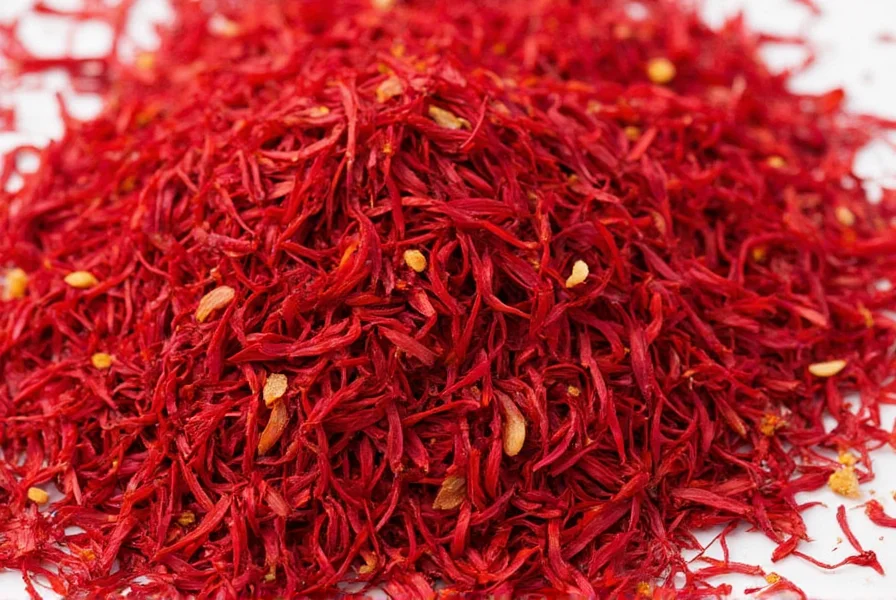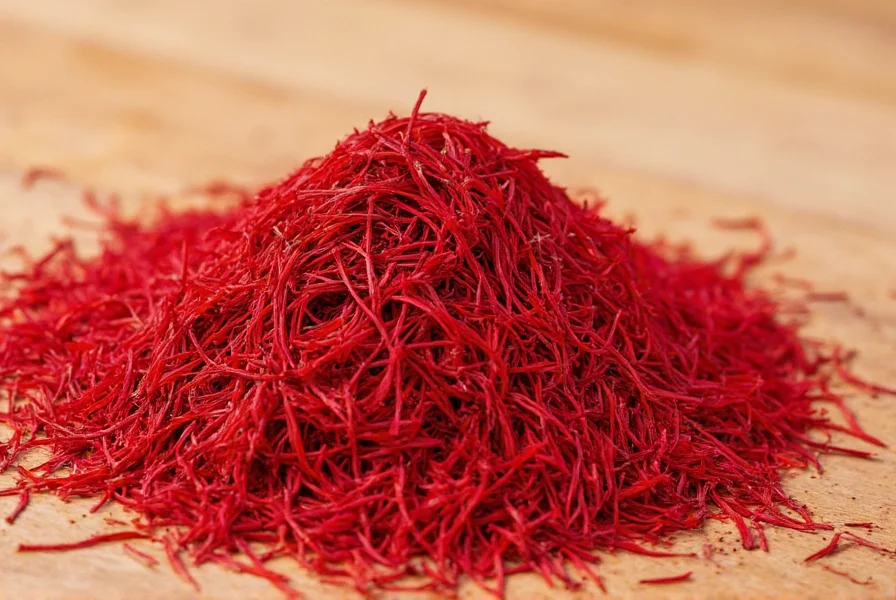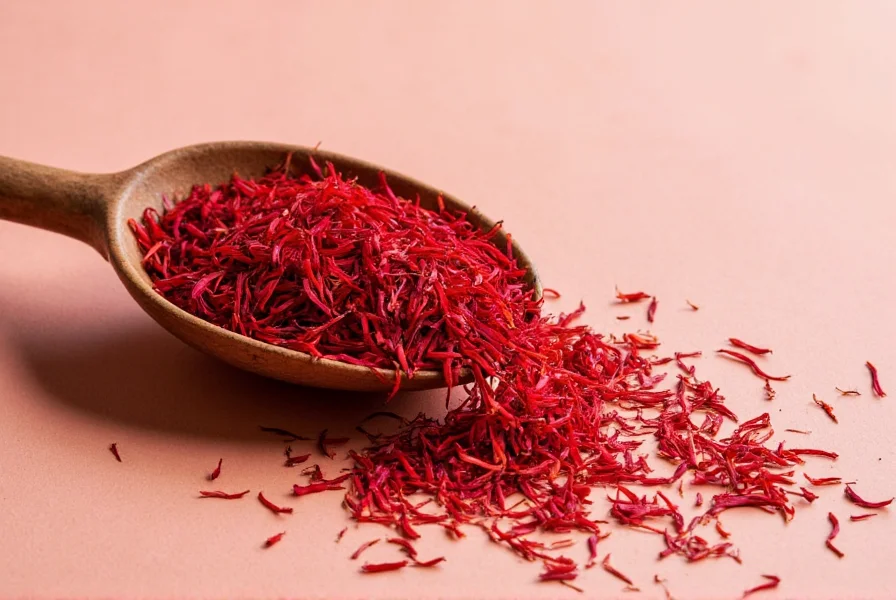Saffron's distinctive crimson threads have captivated civilizations for millennia, valued not only for their vibrant color but for their unique flavor profile that transforms ordinary dishes into extraordinary culinary experiences. This precious spice contains over 150 volatile compounds that contribute to its complex aroma and taste, setting it apart from all other seasonings.
The Botanical Origin of Saffron
Crocus sativus, the saffron crocus, is a sterile triploid flower that cannot reproduce naturally and must be propagated manually by dividing its corms. Unlike wild crocuses, this cultivated variety produces three vivid red stigmas per flower, which are carefully hand-picked at dawn when the blossoms first open. The delicate nature of these threads requires immediate drying to preserve their chemical compounds, particularly crocin (responsible for color), picrocrocin (for flavor), and safranal (for aroma).
| Characteristic | Description |
|---|---|
| Botanical Name | Crocus sativus |
| Harvest Season | Autumn (October-November) |
| Flowers per Kilogram | Approximately 150,000 |
| Stigmas per Flower | 3 |
| Primary Growing Regions | Iran (90% of global production), Spain, India, Greece |
Why Saffron Commands Premium Prices
The extraordinary cost of saffron stems from its entirely manual production process. Each crocus flower blooms for merely one week annually, opening at sunrise and closing by noon. Harvesters must work quickly at dawn to collect the blossoms before they close, then immediately extract the three stigmas from each flower by hand. This meticulous process requires about 40 hours of labor to produce just one ounce of dried saffron. Unlike mechanized agricultural processes, saffron harvesting remains stubbornly resistant to automation, preserving its status as the world's most expensive spice.

Culinary Applications and Proper Usage
Chefs worldwide prize saffron for its ability to impart both golden-yellow hue and distinctive flavor to dishes. Traditional applications include Spanish paella, Italian risotto alla Milanese, Persian tahdig, and Indian biryani. To maximize flavor extraction, culinary experts recommend:
- Crushing threads gently with a mortar and pestle before use
- Steeping in warm liquid (not boiling) for 15-20 minutes
- Using only 10-20 threads per serving for optimal flavor
- Adding early in cooking to allow full flavor development
Understanding what saffron spice contributes to cooking reveals why substitutes like turmeric or safflower cannot replicate its complex flavor profile, though they may mimic its color. Authentic saffron delivers subtle notes of honey, earth, and hay that transform dishes in ways mere colorants cannot.
Distinguishing Genuine Saffron from Counterfeits
Given saffron's high value, adulteration is common in the marketplace. Consumers seeking authentic saffron should look for:
- Deep red threads with minimal yellow style (the white base)
- Intense aroma when crushed (should smell floral, not musty)
- Gradual release of golden color in warm water (not immediate)
- Threads that feel slightly moist, not brittle
The ISO 3632 grading system evaluates saffron quality based on crocin (coloring strength), picrocrocin (taste), and safranal (aroma) content. Grade I represents the highest quality with intense color and flavor, while lower grades contain more yellow style or show reduced chemical potency. When learning how to identify real saffron, remember that exceptionally cheap offerings almost certainly contain fillers like safflower or marigold petals.
Historical and Medicinal Context
Archaeological evidence suggests saffron cultivation began in Bronze Age Greece over 3,500 years ago, with early uses spanning medicine, dyeing, and religious ceremonies. Ancient physicians prescribed saffron for digestive issues, mood disorders, and as an aphrodisiac. Modern research explores saffron's potential benefits for eye health, mood regulation, and antioxidant properties, though these applications should not replace professional medical advice.

Storage and Preservation Techniques
To maintain saffron's potency, store threads in an airtight container away from light, heat, and moisture. Properly stored saffron retains its flavor for up to two years, though peak quality occurs within the first six months. Never refrigerate saffron as humidity damages the delicate threads. For long-term storage, consider freezing in vacuum-sealed packaging. Understanding saffron storage requirements ensures you maximize the value of this precious spice.
Frequently Asked Questions
Why is saffron so expensive compared to other spices?
Saffron's high cost stems from its entirely manual harvesting process requiring approximately 150,000 crocus flowers to produce one kilogram of dried stigmas. Each flower produces only three stigmas that must be hand-picked at dawn during a brief autumn blooming season, with no mechanization possible in the delicate extraction process.
How can I tell if saffron is genuine or adulterated?
Authentic saffron threads should be deep red with minimal yellow style (white base), release golden color gradually in warm water (not immediately), have a distinctive floral aroma when crushed, and feel slightly moist to the touch. Counterfeit saffron often uses safflower or marigold petals that release color too quickly or lack saffron's complex aroma.
What's the difference between saffron and turmeric?
While both provide yellow color, saffron comes from crocus stigmas and delivers a complex floral-honey flavor with subtle earthy notes, whereas turmeric is a root with an earthy, slightly bitter taste. Saffron contains crocin for color and safranal for aroma, while turmeric's color comes from curcumin. They're not interchangeable in recipes as they create fundamentally different flavor profiles.
How much saffron should I use in cooking?
A little saffron goes a long way - typically 10-20 threads (0.05-0.1 grams) suffices for four servings. Professional chefs recommend crushing threads and steeping in warm liquid for 15-20 minutes before adding to dishes. Using too much can create bitterness, while proper amounts deliver saffron's distinctive flavor without overpowering other ingredients.
Does saffron have any health benefits?
Traditional medicine has used saffron for centuries, and modern research suggests potential benefits for mood regulation, eye health, and antioxidant properties. However, these applications shouldn't replace professional medical advice. Culinary use of saffron as a spice is safe, but therapeutic doses require consultation with healthcare providers due to potential interactions with medications.











 浙公网安备
33010002000092号
浙公网安备
33010002000092号 浙B2-20120091-4
浙B2-20120091-4